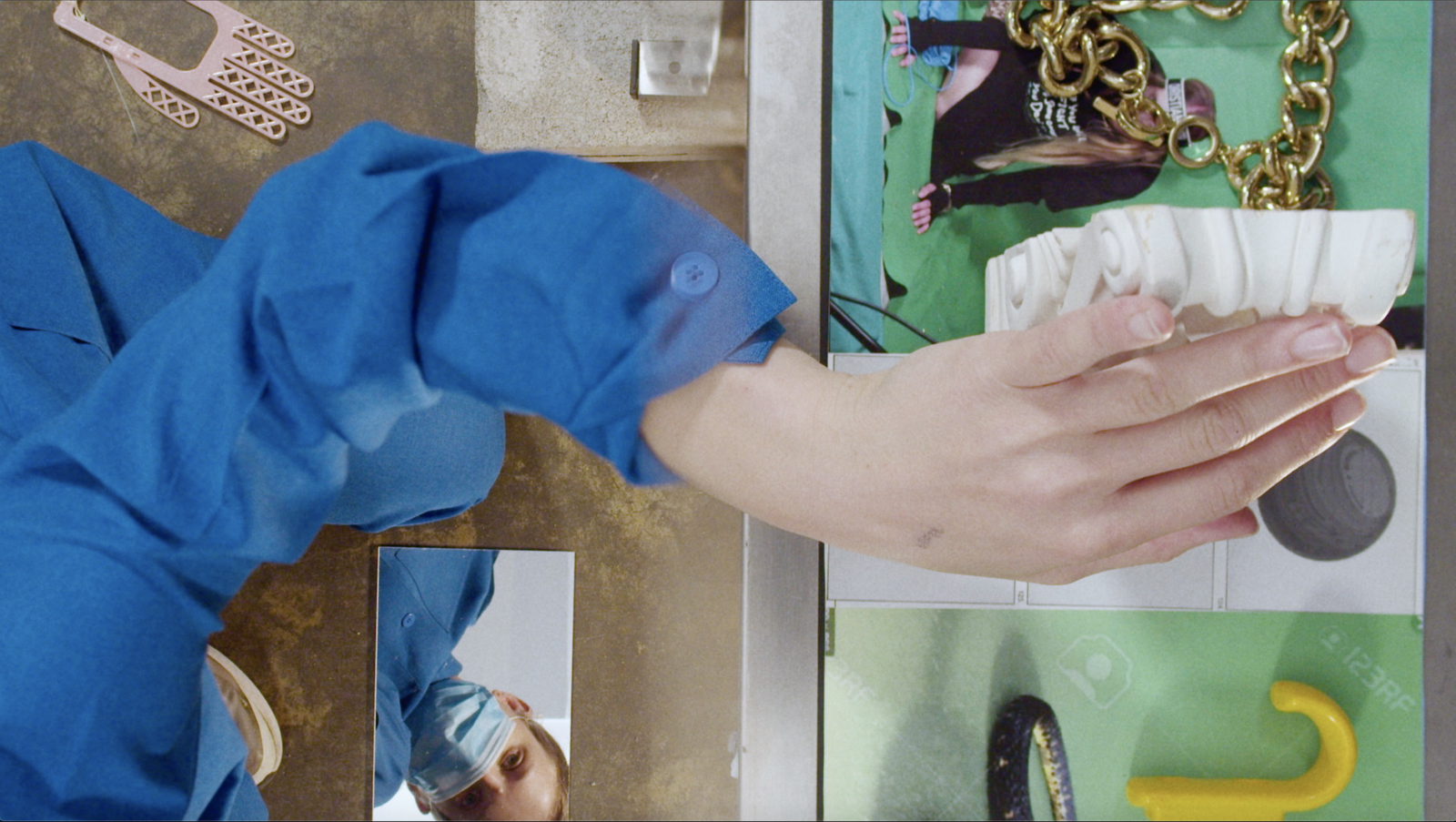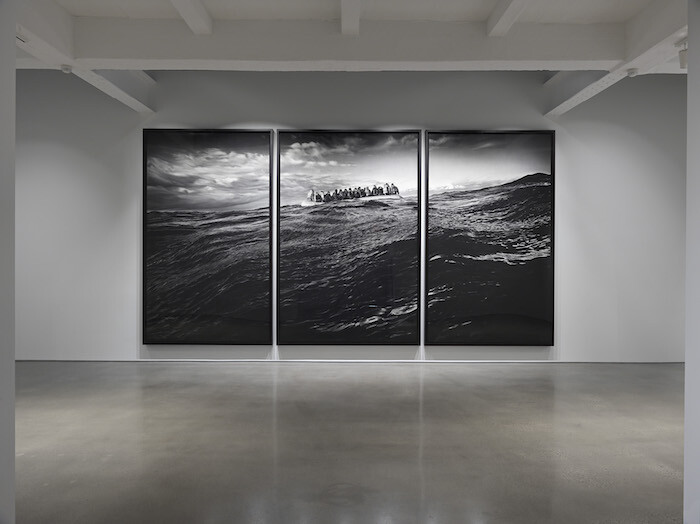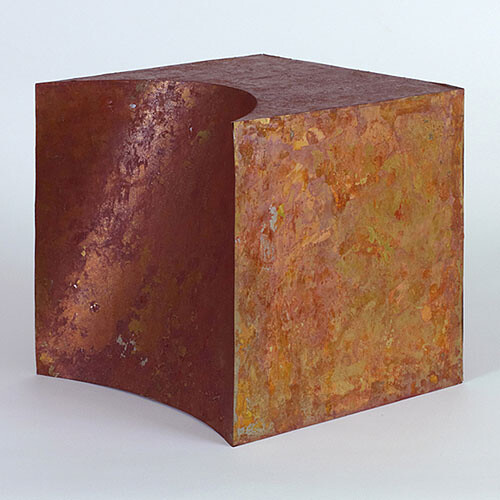Categories
Subjects
Authors
Artists
Venues
Locations
Calendar
Filter
Done
September 17, 2021 – Review
Sara Cwynar’s “Glass Life”
R.H. Lossin

Early in T.S. Eliot’s Four Quartets (1941), we are told to get out: “Go, go, go, said the bird: human kind / Cannot bear very much reality.” Part of Eliot’s poem makes up a small fraction of the voiceover narration to Sara Cwynar’s six-channel video installation Glass Life (2021), a maximalist meditation on living amongst ever-accumulating and constantly moving images.
Glass Life is as dense audially as it is visually. The images are accompanied by two voices reading a sequence of largely unattributed quotes culled from texts and speeches by Anne Boyer, Margaret Thatcher, and William Shakespeare, among many others. But this line seems to offer a particularly apt cipher for a work that is about a life lived in and through an excess of images and text—a life whose reality is always in question, where the distinction between activity and documentation collapses, and representation precedes its object. What is the internet but a massive archive? And what is an archive but an institution, as Jacques Derrida noted in the mid-1990s, obsessed with cheating death? “The archiving,” Cwynar’s two narrators say, “makes the self seem richer and more substantial even as it becomes more tenuous.”
The internet is a space …
May 23, 2017 – Feature
New York City Roundup
Orit Gat

As I missed out on international art events this season because New York is so far away, all I could think of was how unlucky their curators are. You work on Venice or Documenta for a year or two or four. You start out researching when there’s a somewhat liberal president in the US and some island off the coast of Europe still considers itself part of the union. Though the war in Syria, the refugee crisis, and economic instability in the EU were already present, there’s still a feeling that this past year has served too many blows. And those large-scale exhibitions, years in the making, all opened to a great unknown.
On Instagram, almost all the photos I see from Venice are of the same works, and I wonder how and if they respond to the current situation, whether there is a way for art not to seem detached. In New York, few of the exhibitions currently on view in commercial galleries and museums focus directly on contemporary politics. At Metro Pictures, Robert Longo’s show, “The Destroyer Cycle,” does just that. It’s comprised of large-scale charcoal-and-graphite drawings of riot cops in full gear, prisoners being led to a CIA …
January 25, 2012 – Review
Michael Wang’s “Carbon Copies”
Media Farzin

Michael Wang’s recent one-week exhibition, “Carbon Copies,” had nothing to do with those antiquated, inky sheets necessary before the advent of more efficient means of reproduction. For one thing, Wang’s work was nowhere near as messy. A trained architect, he used his first solo exhibition to “copy” twenty contemporary artworks from the perspective of their environmental impact. The show was tightly focused, neatly presented, grounded in persuasive research, and—in some way—entirely superfluous to his project’s stated aims.
His setup was straightforward, if obsessively predetermined: Wang had crafted small cubes representing well-known artworks from the past two decades. Each was sized according to the carbon emissions released in the process of the original artwork’s making. They ranged from the expected culprits (Richard Serra’s steel works, Damien Hirst’s diamonds) to surprise calculations (Marina Abramovic’s lighting, Chris Ofili’s air travel). The cubes themselves looked deliberately handmade, some shaded or textured in delicate graphite, others cast in a material resembling the original (a transparent Roni Horn, a waxy Matthew Barney). They were placed in neat rows, alphabetically by artist’s last name, and the accompanying certificates were placed away from the cubes on shelves along the walls, perhaps to allow for an initial encounter with objects …
